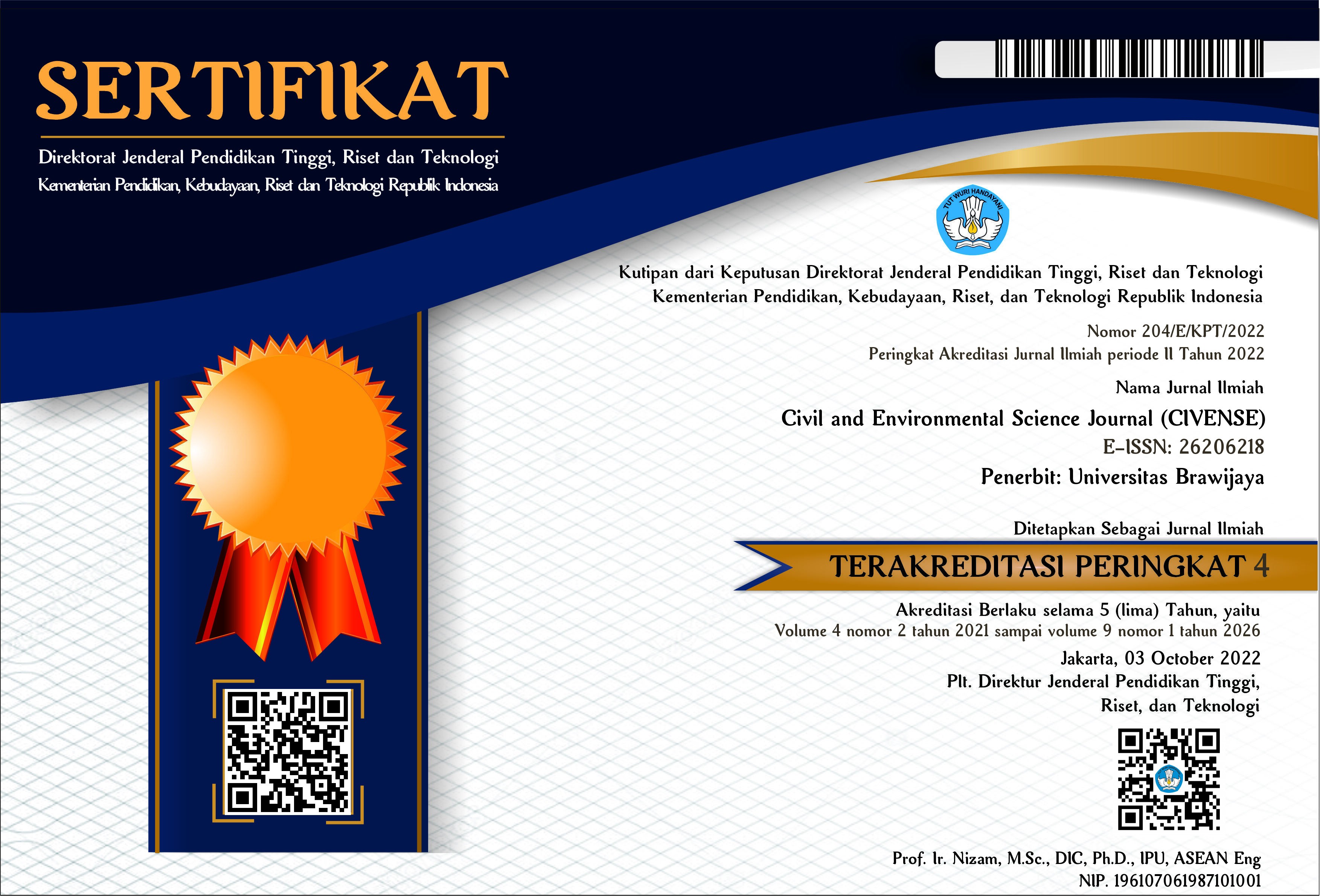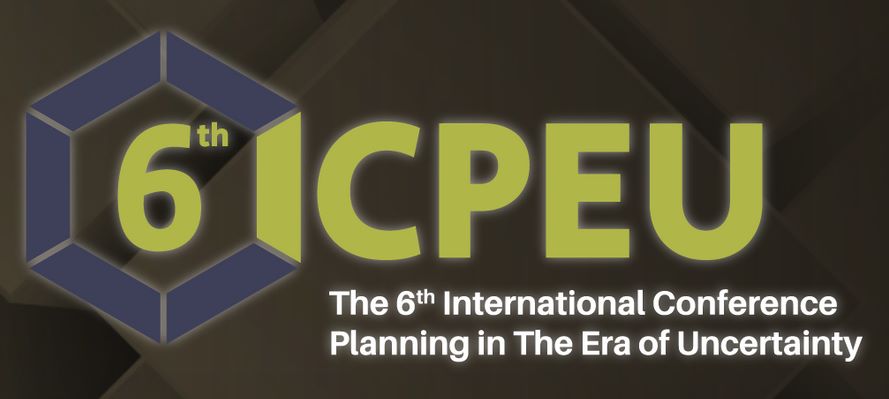Integrated Urban Drainage Management for Flood Inundation Controlling in Sidokare Area at Sidoarjo Regency
DOI:
https://doi.org/10.21776/ub.civense.2019.00202.3Keywords:
flood, inundation, flood reduction, urban drainage, integrated drainage managementAbstract
Flood and inundation had become a serious problem in Sidoarjo Regency annually. This study aimed to apply integrated urban drainage management for flood inundation controlling at Sidokare Region in Sidoarjo Regency. This integrated drainage management consisted of retarding pond, drainage channel redesign, and pump utilization. The study region was divided into Sidokare Pump station, Sepande, and Diponegoro Street catchment area. Rainfall intensity during historical floods was analysed using Mononobe formula and Log Pearson Type III method was used to analyze design rainfall. From the result of the analysis, it wasfoundthat thehistoricalfloodsinstudyregioncausedbyrainfall withreturnperiodof1.01 years, with rainfall intensity of 17.55 mm/hour. It was also found that by implementing this integratedurbandrainagemanagementatSidokareRegion,floodcouldbereducedupto100%. ForSidokarePumpStationcatchmentarea,theinundationmanagementwasconductedbyusing combination of storage pool, existing drainage channel, and the existing flood pump. For Sepandecatchmentarea,itwasmanagedtousethecombinationofstoragepoolandtheexisting drainage channel. Meanwhile, Diponegoro Street catchment area was solved by utilizing new flood pump combining with new tertiary channel and existing drainagechannel.References
X. Dong, H. Guo and S. Zeng, Enhancing future resilience in urban drainage system: Green versus grey infrastructure, Water Research, vol. 124, pp.280-289
Semadeni Davies, Annette, Hernebring, C., Svensson G. and Gustafon, 2008, The impacts of climate change and urbanisation on drainage in Helsingborg, Sweden: combined sewer system, Journal of Hydrology 350(1-2). P.114-125.
Marcelo Games Miguez, Aline Pires Verol and Paulo Roberto Ferreira Carneiro (2012). Suistainable Drainage systems: An Integrated Approach, Combining Hydraulic Engineering Design, Urban Land Control and River Revitalisation Aspect, Drainage Systems, Prof Muhammad Salik Javaid (Ed), ISBN: 978-953-51-0243-4, InTech
A Javaheri and M. Babbar-Sebbens, On comparison of peak flow reductions, flood inundation maps, and velocity maps in evaluating effects of restored wetlands on channel flooding, Ecological Engineering, vol 73, December 2014, Pages 132-145
Chow, V.T., D.R. Maidment, D. R.,Mays, L.W. 1988. Applied Hydrology, McGraw-Hill Book Co., Singapore
Witold G. Strupczewskia, Krzysztof Kochaneka and EwaBogdanowiczb, Historical floods in flood frequency analysisi; is this game worth the candle, Journal of Hydrology, Vol. 554, November 2017, pp. 800-816.
H. N Phine and M. A. Hira, Log Pearson type-3 distribution: Parameter estimation, Journal of Hydrology, Vol. 64, Issues 1-4, July 1983, pp. 25-37
J. Yazdi, H. S. Choi and J. H. Kim, A, methodology for optimal operation of pumping stations in urban drainage systems, Journal of Hydro-environment Research, vol. 11, June 2016, pp.101-112.
Downloads
Published
How to Cite
Issue
Section
License
Copyright (c) 2019 Civil and Environmental Science Journal

This work is licensed under a Creative Commons Attribution-NonCommercial 4.0 International License.
Authors who publish with this journal agree to the following terms:
Authors retain copyright and grant the journal right of first publication with the work simultaneously licensed under a Attribution-NonCommercial 4.0 International License that allows others to share the work with an acknowledgement of the work's authorship and initial publication in this journal.
Authors are able to enter into separate, additional contractual arrangements for the non-exclusive distribution of the journal's published version of the work (e.g., post it to an institutional repository or publish it in a book), with an acknowledgement of its initial publication in this journal.
Authors are permitted and encouraged to post their work online (e.g., in institutional repositories or on their website) prior to and during the submission process, as it can lead to productive exchanges, as well as earlier and greater citation of published work (See the Effect of Open Access).














